(Professional driving coach, sports car racer, and author of the bestselling Speed Secrets book series Ross Bentley will join us every other week to explain and dissect aspects of high-performance driving. Sharpen those pencils, take a seat, and speak up in the comments below. Class is in session.)
As a kid, I loved merry-go-rounds. You know the ones where you run and push, run and push, run and push, then jump on, hang off the outside, and feel the g-loads rushing your blood and internal organs to one side of your body? Those were especially fun if my brother came with me to the playground. He provided extra power.
He also called them “barf machines.”
I hated it when the merry-go-round began to slow, losing its momentum. Slowing meant two things. First, the g-load dissipated (a terrible thing for a g-load junkie). Second, it meant I had to jump off and push it again (my brother had no energy whatsoever to push, at that point).
Cars are the same. I hate it when they lose momentum.
Imagine whizzing through a 90-degree right-hander on a race track in a Miata, the ultimate “momentum car.” Right at the point in the corner where you’re at the minimum speed (that moment right after easing your foot off the brake pedal, and before you’ve begun to squeeze on the throttle), your 138-horsepower rocket is at 49 miles-per-hour.
On the next lap, you begin easing your foot off the brake pedal as you enter the corner just a little bit slower. You hang on the brakes a touch longer, slowing your Miata to 47 miles-per-hour.
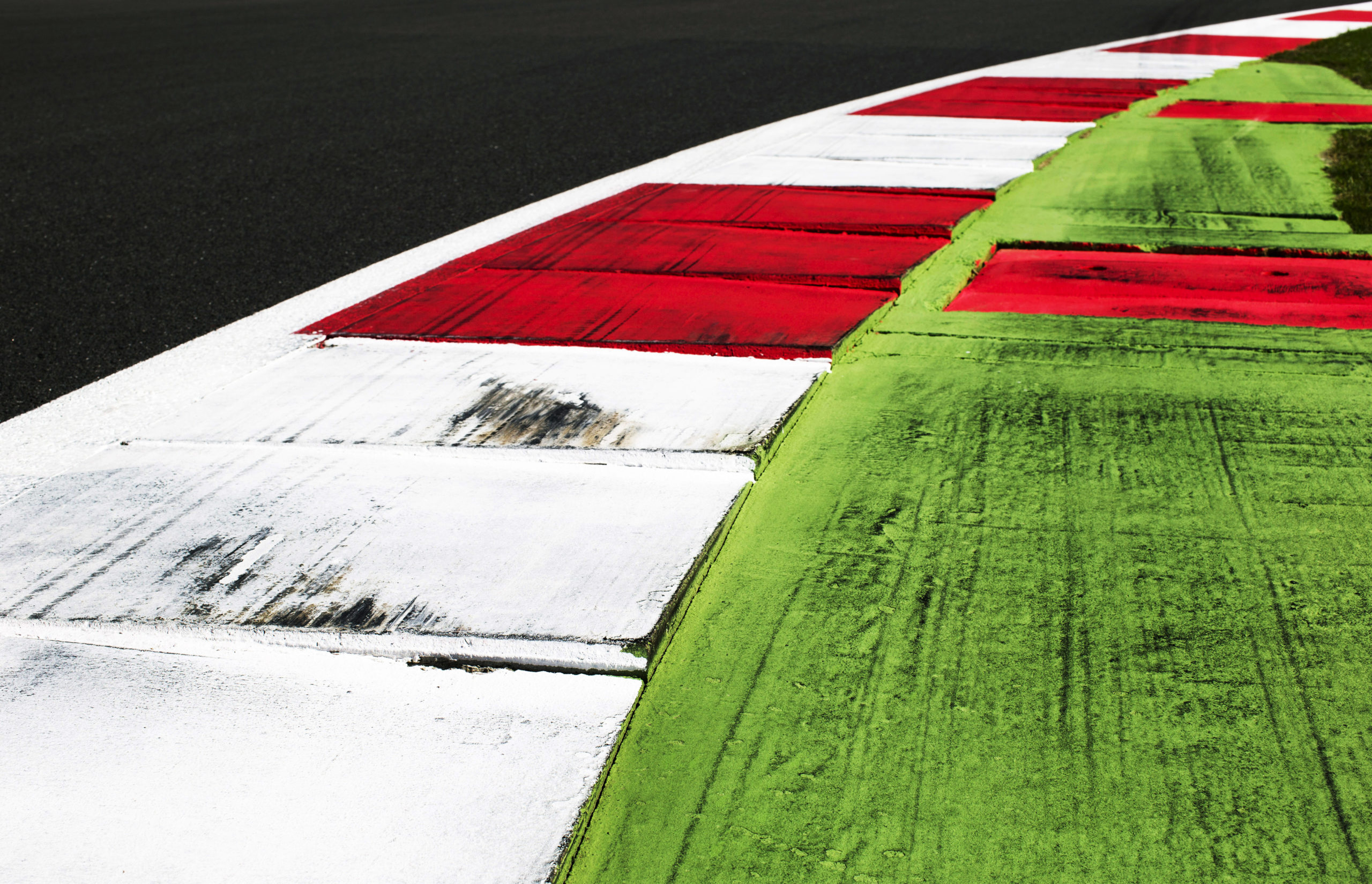
(Photo by Darren Heath/Getty Images)
This instance is a bit like when my merry-go-round slowed to the point where I could jump off it without being thrown into the swings (We hated those swing kids, didn’t we?). By over-braking, your Miata lost momentum.
Ahh, but that’s okay if you’re just two miles-per-hour slower, right?
You can just put the hammer down a little harder. In fact, you try to press the gas pedal down and through the floor. Still, your speed down the following straightaway is not what it once was. Your lack of momentum hurt your cornering speed and your speed down the straight. The loss of momentum in a car like a Miata can result in a drastic loss of top-end speed on the next straight. In fact, it might take another lap or two of pushing the merry-go-round to get it back up to speed.
Now, imagine driving a C8 Z06 Corvette through that exact same corner. And let’s say your minimum speed (what we call “min speed”) at the same spot in the corner is 47 miles-per-hour—just like the over-slowed Miata.
With 670 horsepower under your right foot, you’re using a sledge hammer rather than a kid’s toy hammer, and in a near-instant, your internal organs are heading into the back of the seat, and you’re rocketing down the next straightaway.
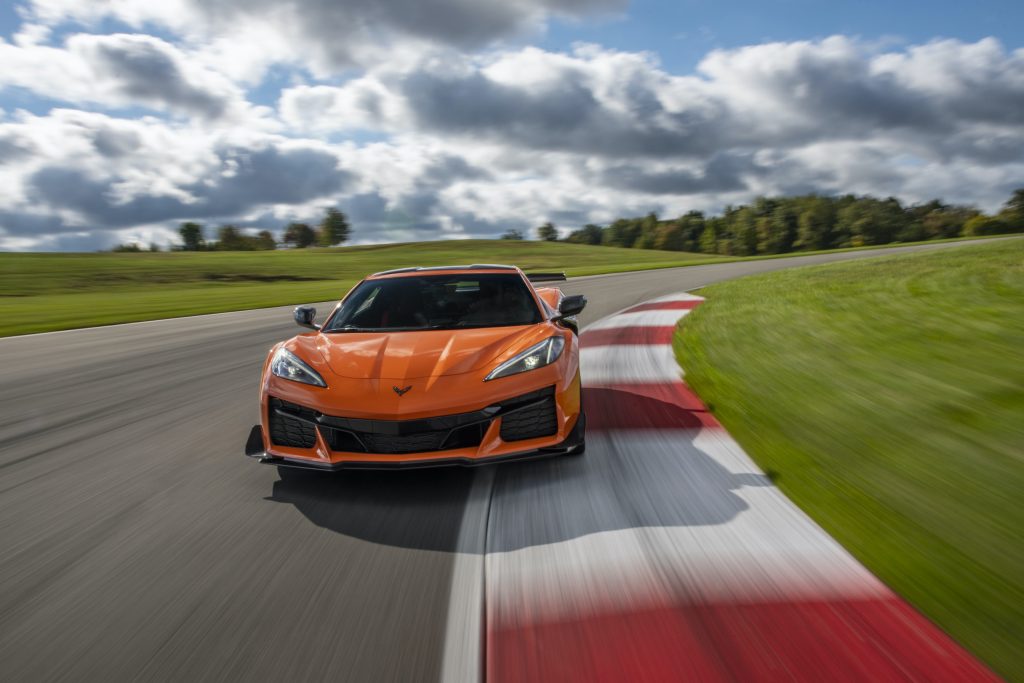
That’s the difference between a momentum car and what we can refer to as a “point-and-shoot” car. With a momentum car, it’s all about maintaining speed. With point-and-shoot Z06, for example, it’s all about regaining speed.
Different drivers have different driving styles, too, with some being more of a momentum-type driver, and others using a point-and-shoot style. With the latter, the min speed is not as important as how early you can get to full throttle when exiting out of corners; the goal is to regain speed by using the torque and horsepower to reaccelerate the car. With momentum drivers, on the other hand, the goal is to slow the car as little as possible, to maintain its speed, because it has comparatively little torque and horsepower.
For momentum driving, the line through corners uses as large a radius as possible. This is important to unlocking maximum momentum. The smaller the radius we drive, the slower we have to go, so we try to flip that around to keep our momentum up.
With a point-and-shoot style, the driver tends to brake later, drive deeper into the corner before turning comparatively sharper (tighter, smaller radius) to get the car pointed in the direction of the next straightaway as early as possible. They can then take advantage of their car’s acceleration capabilities.
In thinking about the difference between momentum and point-and-shoot cars, the Miatas of the track world have more cornering power than they do acceleration power. Point-and-shoot cars are the opposite. Think of an early Cobra, with tons of engine power, but relatively less cornering ability.
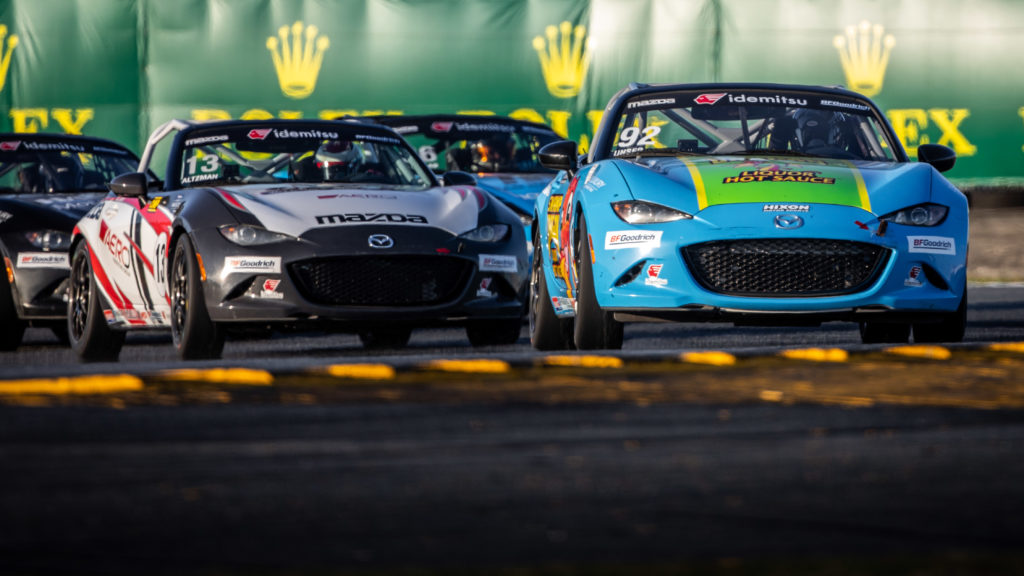
Contrary to what I said about the Z06, I believe all cars, no matter how much acceleration ability they have, can be momentum cars. Think about it: whether you’re driving a Miata or a Corvette, you would much rather begin accelerating out of a corner from 49 than 47 miles-per-hour. (Sure, if you started from 47 miles-per-hour in both cars, it would be easier to make up for over-slowing in the Vette.)
Your min speed is not a one-sided factor to consider and manage when you’re driving, because it’s not just what your speed is, but it’s also where in the corner it is, and the duration of time you spend at that speed that matters. We drivers are making these complex calculations and comparisons in our minds while traveling the length of a football field in about the time it takes to say “length of a football field.”
Oh, and when someone asks a question about favorite track driving cars, don’t be surprised if the most common answer is “Miata.” Why? Because it’s a momentum car, and when you learn to carry momentum through corners, you’ll be faster in any other car you ever drive. It’s the ultimate training tool. Did you over-slow the car? Was your radius too tight? Get it right and you’ll have oodles of momentum.
The feeling of your blood and internal organs being pushed to the other side of your body, like on that merry-go-round, is what makes track driving so much fun. Cue the barf machine.
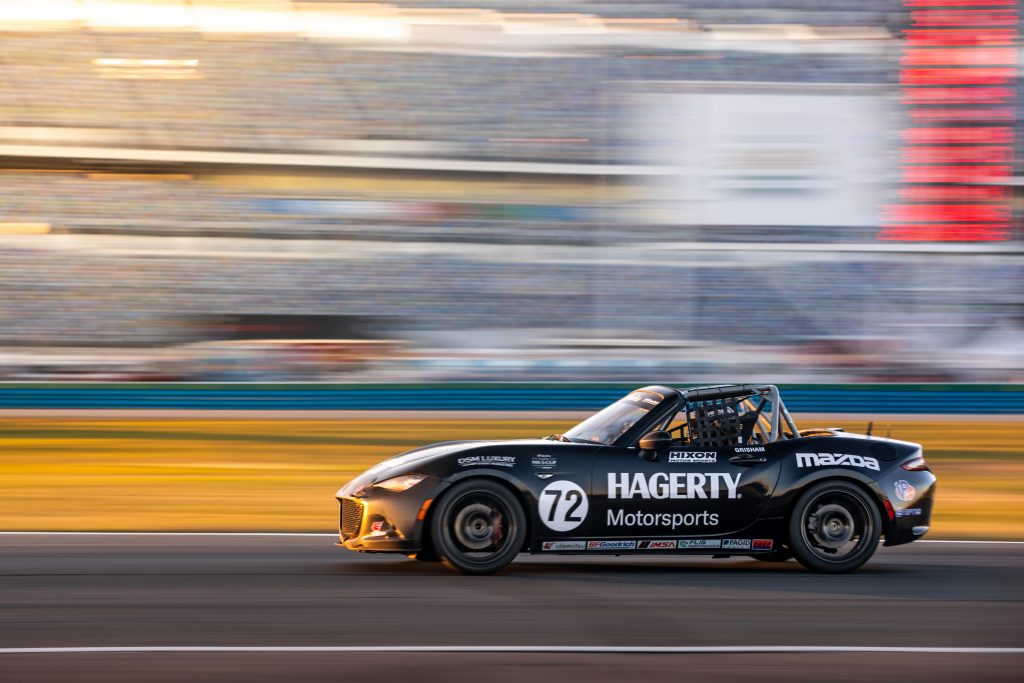



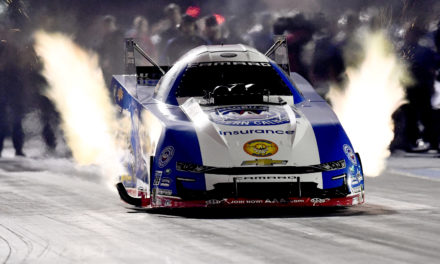




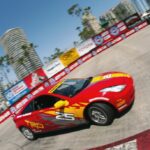
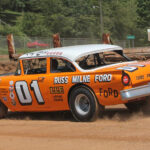
There’s a saying: anybody can drive a fast car fast, but if you can drive a slow car fast, you can drive a fast car *really* fast!
This is absolutely true! When I first started in high-speed autocross (one timed lap around a real race course), I had an LT1 C4 Corvette. Then I switched to a Cosworth Vega for a couple of seasons. When I sold the Vega, I took the Vette for one lash hurrah. I had learned so much about momentum that I thought the tires were hard, I kept kicking out the rear of the car on the slower corners – and picked a couple of seconds on my lap time compared to previously.
Oooh, a Cosworth Vega! That was a very cool engine, right? I only drove one for a few laps once, but it was an impressive car for the cost. Unfortunately, they died off rather quickly…
At the driving schools where I taught classroom, I would always suggest that new drivers start with a car of about 150 horsepower on skinny, slippery tires, preferably one that was relatively inexpensive. Learning car control and how to momentum drive that car would provide a solid basis to move up to any car with more capability. One of my track cars was a v6 Mustang 5 speed on all season tires. So much fun to drive on the track.
Students did not want to hear that!!! They wanted to bring their Corvettes, Ferraris, Vipers, etc., and go 150 on the straights while fumbling through the corners. I do not think my comments converted anyone.
Momentum gives more speed out of the corner. How is the corner apex determined to maximize
Momentum and when to brake and let off the brake.
I’ll be interested to see Mr Bentley’s reply but I’ll chime in as a guy racing an extreme momentum car.
I’ve found for most momentum cars trail braking is the key to getting the car to rotate and conserve that momentum. Read I’m using the brakes to turn the car more so than to necessarily slow it down. I make the comment about getting the car on a trajectory; read once you turn in your path from turn in to exit is set.
When to brake is as simple this; if you are still threshold braking when you should be transitioning to trail braking, which typically happens as you turn in, then you’ve left it to late.
As for when to let off the brakes; if you over rotate the car you’ve left the brakes on to long. If you let off the brakes and the car drifts wide of the apex you’ve come off the brakes to early. You basically zero in on it like Goldylocks; not to hard not to soft.
All this varies by car; in my Datsun you trail brake fairly deep into a corner, in my Formula 500 I come off the brakes 20-30ft sooner in any given corner.
I set the apex based on one that allows me to use the least amount of steering lock as well as travel the shortest distance through the corner.
All this is my .02
Tom, your comment and application of how to use the brakes to rotate the car and carry momentum is worth a LOT more than $0.02!! In fact, you’re dead-on correct, and I really like the way you described what you do with the brakes. Keep doing what you’re doing, and having fun!
While I have a good bit of time in single seat cars the vast majority of my time has been spent in my Datsun 1200 sporting 80hp to the rear wheels. This article is sport on.
As well as SCCA & vintage racing I happen to instruct at track days; the biggest thing I notice with drivers in newer higher horsepower cars is over slowing for corners and not using all of the track. Some of these drivers are actually fairly quick but I’m always left wondering how much faster would they be if they hung onto that 1-2mph of corner speed and used the extra foot of road.
I also wonder how much improvement they would see if the spent a day in a Miata or Formula Vee?